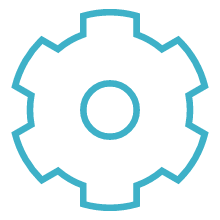Where great ideas grow – What the Medici have to do with modern construction
The Medici villas are far more than architectural masterpieces in Tuscany – they bear witness to an era in which art, science, politics, and nature were not separate worlds, but rather inspired one another. They were places where visionaries gathered, where disciplines converged, and where new things emerged. From this unique fusion grew a spirit of innovation that would shape Europe for centuries to come.
What the Medici created was far more than just a family of patrons – they established a system in which collaboration became a core value. Architects worked with sculptors, philosophers with scientists, artists with engineers. The boundaries between disciplines blurred – and therein lay the source of groundbreaking developments. Today we call this phenomenon the “Medici effect”: the deliberate bringing together of diverse expertise to enable innovation.
The Medici effect in modern construction
Why interdisciplinary collaboration drives innovation – then in Florence, today in engineering
In an era where products are becoming increasingly complex and development cycles ever shorter, this approach is gaining renewed relevance – particularly in product development. Modern PLM systems like the 3DEXPERIENCE platform embody precisely what the Medici once exemplified: breaking down silos, thinking in terms of interconnected systems, and striving for excellence through collaboration.
The Medici effect describes the systematic generation of innovations through the fusion of different disciplines and ways of thinking. It is particularly relevant for technological development processes, in which interdisciplinary collaboration is increasingly becoming the norm. Modern engineering tasks are no longer one-dimensional. Today, products must be developed taking into account a wide range of physical, functional, ergonomic, and regulatory requirements – all under intense time pressure and with high demands for innovation.
Product development in transition: From individual systems to networked platforms
How modern challenges require a new way of thinking in design
A practical example is the development of a smartphone. Here, structural, thermal, electromagnetic, and software-related factors interact with one another. A design change—such as an additional stiffening rib for mechanical stabilization—inevitably alters the heat flow and can affect electromagnetic compatibility. Simultaneously, every software function influences power consumption and thus, in turn, the thermal behavior of the device. Developing such products requires an understanding of multiphysical interactions and their consideration throughout the entire development process—from design to validation.
3DEXPERIENCE as an answer to complex development processes
An operating system for the entire product development process
Technical complexity alone does not make the Medici Effect effective. A cultural shift is crucial: the willingness of all involved to be open, to collaborate across departmental boundaries, and to communicate transparently. The innovation process begins when everyone involved – from the designer to the simulation expert to the production planner – discloses their current state of development and is prepared to further develop it within a shared context. Therefore, team orientation is increasingly becoming a key competency in development departments.
CAD & PLM reimagined: Integration instead of isolation
Why the future of engineering depends on consistent data models
However, for interdisciplinary collaboration to be truly effective, a technological infrastructure is needed that supports this approach – and doesn't hinder it, as is often the case with conventional systems. Traditional IT landscapes are frequently organized into so-called “silos.” CAD data, simulations, requirements, manufacturing information, and documentation exist separately. Exchange between these domains often occurs via neutral formats such as STEP or IGES – formats that can only transport a fraction of the valuable, model-based information. Complete bidirectional associativity – the ability to automatically and semantically correctly trace changes back across systems – is not possible in such environments. Valuable data is lost or maintained twice, leading to errors, inconsistencies, and wasted time.
The role of designers in a networked environment
From silos to synergies: CATIA at the heart of a new understanding of development
The 3DEXPERIENCE platform offers a radically new, integrated approach. It provides an enterprise-wide operating system for digital product development and manufacturing, connecting all disciplines along the product lifecycle on a common, consistent foundation. A monolithic data model is the central element: instead of duplicating data in different formats and tools, there is a single, unified data source – the “Single Source of Truth.” Changes to models, requirements, or simulation results are made available to all stakeholders in real time. The platform avoids data breaks, eliminates silo structures, and enables true digital concurrent engineering.
The platform's application is modular – similar to a smartphone, on which the user can install different applications as needed. CAD, simulation, requirements management, manufacturing, PLM, documentation, and many other functional areas are available at the touch of a button. Changes in one domain automatically and transparently affect all relevant disciplines—like a time zone change synchronizing all apps on a smartphone. An integrated PLM system documents every change and ensures that the development process remains traceable and repeatable.
Holistic simulation with multiphysics multi-objective optimization
How the 3DEXPERIENCE platform merges design and simulation
A particular focus is placed on the role of design. Designers who have previously worked with CATIA can continue to do so – now embedded in a holistic, networked environment. The separation between “design” and “simulation” dissolves. Simulation transforms from a subsequent verification step into an integral part of the design process. Designers use simplified simulations early on to make more informed design decisions – qualitative statements about load profiles, temperature distributions, or flow directions help to identify potential problems early. Simulation specialists, on the other hand, use the same model for highly precise, validating analyses – without data migration.
The platform supports a wide range of multiphysics simulations: structural mechanics, thermodynamics, fluid mechanics, electromagnetism, acoustics – all interconnected and consistently executable on the same model. The boundaries between disciplines are increasingly blurring in favor of a systems understanding that enables innovation at a new level.
Data structure as a driver of innovation
Why structured development is the basis for tomorrow's AI-supported systems.
A key advantage of this holistic approach is the structured and contextualized database it creates. Every development step, every decision, every iteration is digitally captured – within its respective context of origin. This results in a consistent “information stack” that not only efficiently supports current processes but also forms the basis for future AI-powered development systems. Artificial intelligence can only be used effectively if it has access to valid, structured, and context-rich data. The 3DEXPERIENCE platform provides the technological and methodological foundation for this
Conclusion: The digital Medici effect
What companies can learn from the Renaissance – and how 3DEXPERIENCE enables it
The Medici Effect describes the potential that arises from consciously bringing together diverse expertise – then as now. The 3DEXPERIENCE platform is the digital expression of this principle: It connects people, disciplines, and data in a way that not only enables innovation but systematically fosters it. For companies in mechanical and plant engineering, electronics, the automotive industry, or aerospace, this means: greater efficiency, higher quality, shorter time-to-market – and above all: the ability to create truly new things together in an increasingly complex environment.

 Advanced Simulation
Advanced Simulation

 Engineering
Engineering

 PLM
PLM


.gif?width=500&name=Adobe%20Express%20-%20Modeling%20Interference%20Fits%20Using%20Abaqus%20Explicit%20main%20image%20(big).gif)


 MBSE
MBSE